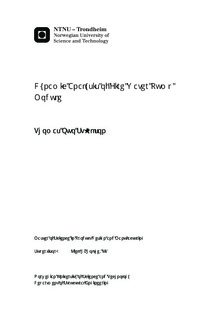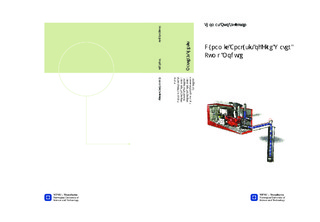| dc.contributor.advisor | Holthe, Kjell H. | nb_NO |
| dc.contributor.author | Størkson, Thomas Otto | nb_NO |
| dc.date.accessioned | 2014-12-19T12:00:36Z | |
| dc.date.available | 2014-12-19T12:00:36Z | |
| dc.date.created | 2012-11-08 | nb_NO |
| dc.date.issued | 2012 | nb_NO |
| dc.identifier | 566035 | nb_NO |
| dc.identifier | ntnudaim:8189 | nb_NO |
| dc.identifier.uri | http://hdl.handle.net/11250/236978 | |
| dc.description.abstract | The thesis starts with a simple description of the system and some brief theory needed for the following analysis. Further a factory acceptance test is performed, this implies measurement of the dynamic response due to load generated by the system itself under normal operation and making sure the dynamic behaviour are within the acceptance criteria. The data from the test is used to point out some weaknesses in the design from a dynamical point of view and some potential ideas of improvement are presented. To introduce additional damping of some of the rotational equipment is the idea which is proceeded with. A great simplification in this thesis is that only transversal vibrations (the y-component of the vibrations) are considered after the factory acceptance test is performed. This results in less reliable quantities although the trends and the final conclusion remains correct. A comprehensive finite element analysis is carried out to study the effect of a passive damper solution. It turns out that passive dampers can limit the vibrations remarkably, but if the foundation gets too soft the vibrations will increase. The low frequency vibration however, is not affected much by the additional damping. Some important eigenfrequencies are also studied and put into consideration. A sensitivity analysis of the constant damping ratio in the finite element solver is also performed. In addition a more trivial analysis is performed to study the effect of an active damper solution. This solution seems to be less effective and does not influence the low frequencies considerably neither. It also introduces additional risk and weight to the system, which is highly undesirable. The thesis concludes that passive damping of the hydraulic power unit has favourable effects on the system. If the main goal is to reduce low frequency vibration it might not be an entirely satisfying solution. | nb_NO |
| dc.language | eng | nb_NO |
| dc.publisher | Institutt for konstruksjonsteknikk | nb_NO |
| dc.subject | ntnudaim:8189 | no_NO |
| dc.subject | MTPROD produktutvikling og produksjon | no_NO |
| dc.subject | Industriell mekanikk | no_NO |
| dc.title | Dynamic Analysis of Fire Water Pump Module | nb_NO |
| dc.type | Master thesis | nb_NO |
| dc.source.pagenumber | 92 | nb_NO |
| dc.contributor.department | Norges teknisk-naturvitenskapelige universitet, Fakultet for ingeniørvitenskap og teknologi, Institutt for konstruksjonsteknikk | nb_NO |

